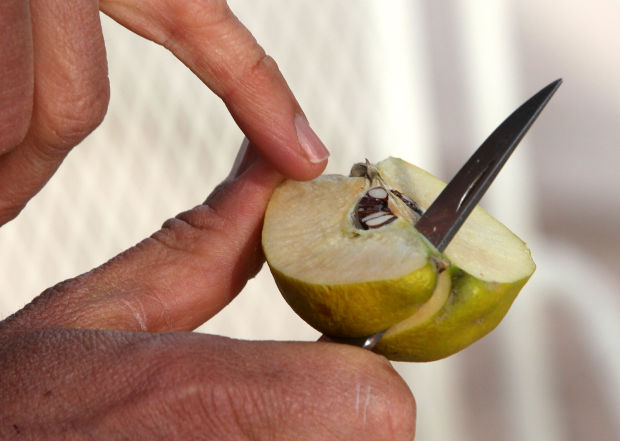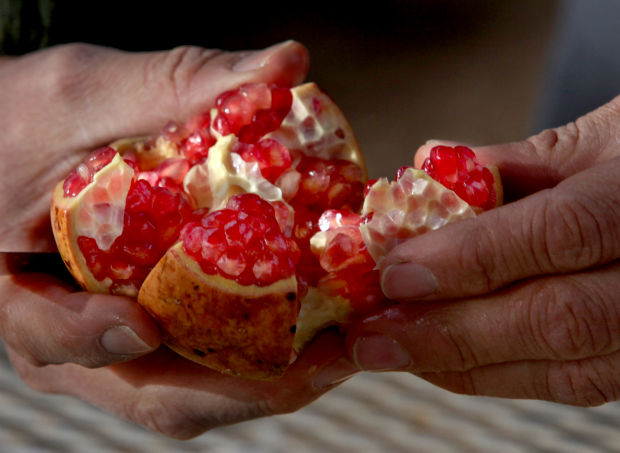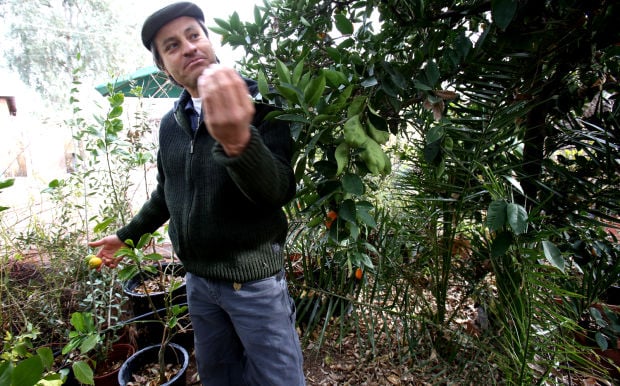For Jesus Garcia, the local-food movement is a return to simpler, but very familiar, times.
Garcia grew up on a small ranch in Sonora where his parents raised cattle, cultivated crops and tended a backyard orchard of fruit trees brought to the New World by Spanish missionaries.
Garcia came north, originally embarrassed by his humble roots, only to return to them in a professional capacity as a biologist committed to saving and propagating those heritage trees.
Working at the Arizona-Sonora Desert Museum with partners at the University of Arizona and the National Park Service, he conducted research to find heritage fruit trees and replant orchards of fig, peach, apricot, quince, pomegranate and citrus in their original Southern Arizona locations.
The Kino Heritage Fruit Trees Project planted a variety of trees at Tumacacori National Historical Park. More recently, Garcia brought his heritage trees to Mission Gardens on the west bank of the Santa Cruz River in Tucson.
On Monday, a film made about Garcia’s odyssey, “A Taste of History,” will kick off the Arizona Food and Farm Finance Forum, organized by a number of groups interested in promoting an intensely local agriculture.
Gary Paul Nabhan, ethnobotanist and one of the founders of Native Seeds/SEARCH, sees the local-food movement as a way to eat better, improve health and grow the local economy — in addition to connecting to our past.
The local proliferation of food trucks, farmers markets and farm-to-table restaurants is a good sign, Nabhan said, but represents “pardon the pun, the low-hanging fruit.”
Nabhan and the organizers of the Food Finance Forum want to stimulate expansion of local-food supplies by putting food entrepreneurs together with philanthropic investors to fund the necessary infrastructure of a local-food economy, from growers and ranchers to food processors, distributors and retailers.
Processing of local, grass-fed beef is one example of a gap that needs to be filled, he said.
Diablo Burger, a Flagstaff restaurant devoted to serving regionally grown food, which opened a second site on Congress Street in Tucson last year, buys its beef from two ranches near Diablo Canyon outside Flagstaff.
The ranchers send that local beef to Colorado for butchering and processing. Demand for local beef exceeds locally available facilities, Nabhan said.
Not all food-chain needs are as expensive as building a food-processing facility, he said. Often it is simply a case of linking growers, distributors and retailers, or promoting food products made from local, healthy ingredients.
The forum, being held at Biosphere 2 Tuesday and Wednesday, is an attempt to make those connections. It will include a session where food entrepreneurs will make pitches for investment money.
“Food is a low-capitalization way to get the economy going,” Nabhan said.
The conference is limited to those registered to attend, but Monday’s public event is open to the public for a suggested $5 fee.
Tastes of locally grown food will be provided by Avalon Gardens and EcoVillage of Tumacacori, which recently opened Food for Ascension Cafe at its Sea of Glass Center just off North Fourth Avenue in Tucson.
The event also includes speeches by national experts on slow food and finance.
One of the speakers, Michael Dimock, president of California-based Roots of Change, said food production is a “fulcrum for creating important changes in the ecology, the economy and human health.”
Dimock’s philosophy revolves around the concept of “good food” — food that is healthy for your body, doesn’t harm the planet and justly compensates the people who grow and process it.
Dimock said the “good food” philosophy seeks to overturn an ethic created in the middle of the last century that created an industrial agricultural system geared to fighting hunger by creating cheap calories. “We’re recalibrating so it delivers cheap calories and human health,” he said.
Key to that, he said, is making the advantages of healthy eating available to those who can’t afford its often higher prices.
A program in California taps philanthropists to double the spending power of government food vouchers at 137 farmers’ markets. A pilot program is now available at some California supermarkets and a national pilot is currently included in congressional food bills, Dimock said.
Garcia’s efforts to restore heritage orchards have already born fruit. Even the small trees planted two years ago at Mission Garden in Tucson provided a harvest this year of tasty white pomegranate, which was sold at the nearby Santa Cruz Farmers’ Market.
Garcia harvests his own fruit in his Tucson backyard where, in January, citrus still bear green leaves and bountiful fruit amid the seasonally defoliated white pomegranate, quince, fig and apricot trees.
Garcia has saved some of his bounty.
The seeds of the white pomegranate, named Sosa-Carrillo for its heritage in the backyard of one of Tucson’s oldest homes, have reddened in his refrigerator but they remain paler, much sweeter and much softer than their deep-red cousins.
The quince, a denser, tarter relative of the pear tree, is an acquired taste, but to Garcia it is the taste of his childhood.
The Mexican sweet lime is a revelation — as sweetly edible as a late-season orange.
Garcia has grafted and grown the sweet lime from cuttings taken in the backyard of a Menlo Park family.
For Garcia, it is an attempt to correct a mistake he made when he first moved into this Mexican neighborhood south of the University of Arizona and inherited a backyard full of fruit trees.
He was a conservation biologist in the xeriscape era, full of ideas about how Tucson homes should be ornamented only with desert plants that required no watering.
He let a friend dig up and cart off the Mexican sweet lime tree in his backyard. “It was an 80-year-old tree and I gave it away.”
He has since found only four such trees in Tucson.
He also took out an old fig tree that was undermining the foundation of his house.
He has now come to terms with the notion that desert dwellers need to live in oases. It is an ancient tradition, he says, older than Mexico, with roots in southern Spain and northern Africa. People inhabit deserts but they live in oases.
The Spanish missionaries found conditions for growing the trees they brought with them in native settlements where the waters of the Santa Cruz and the Rio Sonora flowed.
They found them along the Rio Magdalena, where Garcia’s family would later continue the tradition.
Now Garcia finds them in Tucson. The water he saves while soaping up waterless in the shower, he now gives to his trees.
“If I’m going to water something, it’s going to be something that pleases my eye, that grows food and that makes me feel good.”
He is, in a sense, re-creating his past. “I see it as a way of mitigating the food crisis of the future by learning from the past,” he said.








